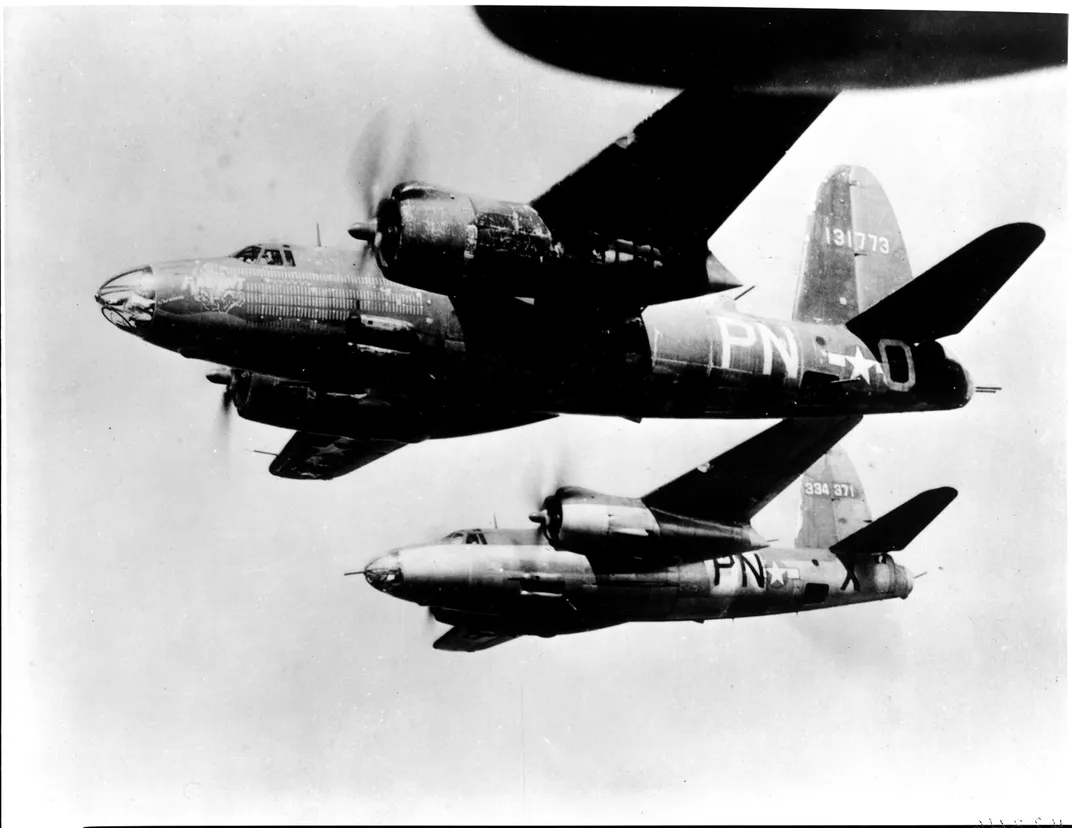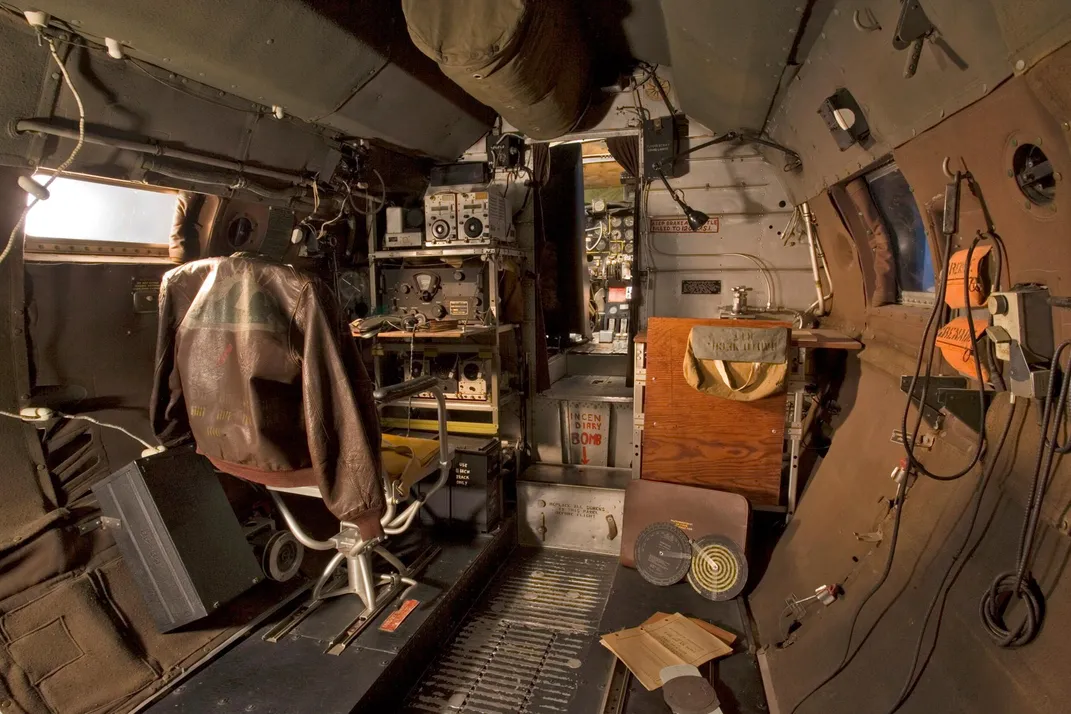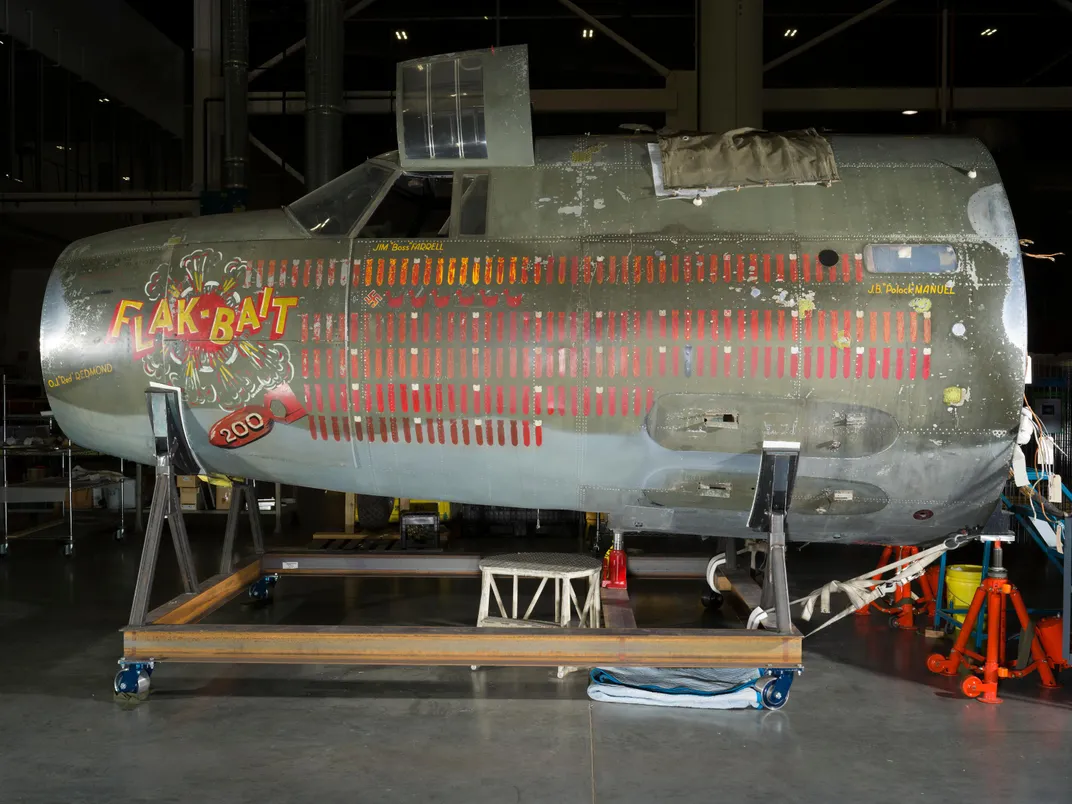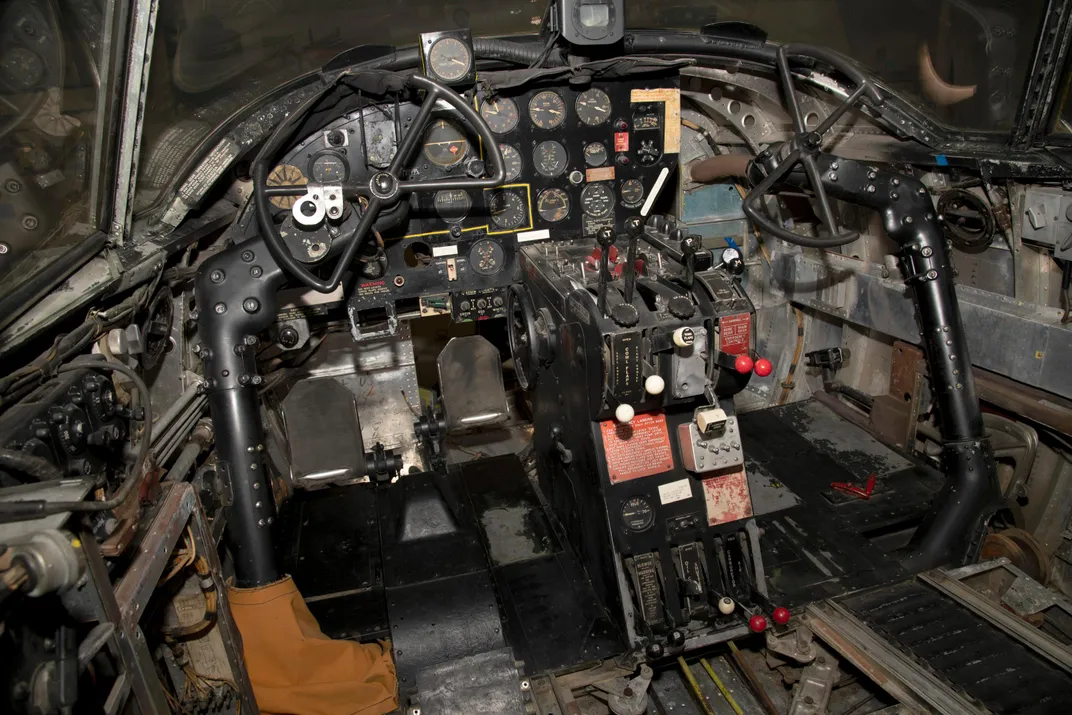This World War II Bomber Took More Enemy Fire Than Most Others and Always Came Home
Known for its memorable April 17, 1945 mission, the B26 bomber ‘Flak-Bait’ undergoes preservation at the National Air and Space Museum
/https://tf-cmsv2-smithsonianmag-media.s3.amazonaws.com/filer/0d/c1/0dc19eaa-3286-4b67-b3d4-1c186c609ccf/si97-15363h.jpg)
At a forward airfield in Le Culot, Belgium, ground crews worked feverishly to ready the 449th Bombardment Squadron for another mission. It was April 17, 1945, and World War II in Europe was nearing an end, though the killing was far from over.
As teams of men lifted heavy bombs into the weapons bays and started rotating the large propellers on the B26 Marauders in preparation for takeoff, aircrews went through checklists and studied maps in advance of their next target: Magdeburg, Germany.
One flight crew examined their two-engine medium bomber with particular interest. The airmen must have wondered how this plane—marked with serial number 41-31773, but better known by the nickname Flak-Bait—was even able to fly. Across its fuselage was a quiltwork of more than 1,000 patches covering holes—some as large as 16 inches—caused by shrapnel from exploding antiaircraft shells on previous combat missions.
This would be a historic flight for the aptly named Flak-Bait, and not just because it was leading the attack that day. Col. John S. Samuel, commanding officer of the 332nd Bombardment Group in the Ninth Air Force, had selected this aircraft as his “flagship” for the assault against Nazi targets in Magdeburg. The pilot that day was Capt. William G. Fort while Col. Samuel served as copilot. They successfully led a strike against the German defensive positions and returned safely to the airfield in Belgium.
But what made this day special for Flak-Bait was the number of missions. This was the 200th for the B-26B-25-MA, manufactured by Martin in 1943. For two years, the aircraft took everything the Germans could throw at her, including shrapnel from flak and machine-gun bullets from enemy fighters, and became the American bomber to survive the most missions of World War II.
“Two hundred missions are a lot for any ship, but Flak-Bait carried her age well,” Col. Samuel would later say.

All told, Flak-Bait flew 200 combat missions, plus six decoy operations, for a grand total of 206 flights. The only bomber to fly more missions was an RAF Mosquito known as F for Freddie, which made it 213 times over enemy territory. Unfortunately, the de Havilland B Mk IX bomber crashed during a war-bond tour in Canada on May, 9, 1945, two days after VE Day.
Today, Flak-Bait is undergoing preservation in the Mary Baker Engen Restoration Hangar at the National Air and Space Museum’s Udvar-Hazy Center in Chantilly, Virginia. Much like on that historic day 75 years ago, crews are once again working to prepare the plane for another mission—this time as a testament to the aircraft that helped win a war and the brave men who flew it. Dedicated experts are painstakingly conserving the aircraft so that future generations will have an opportunity to understand the sacrifices made by a generation of people during World War II.
“We are preserving, not restoring, this great plane,” says Jeremy Kinney, curator in the Aeronautics Department at the museum. “We’re cleaning and stopping any corrosion. Much of the aircraft had been kept in crates since the end of World War II, so there’s a lot of work to do.” The job is expected to be completed by 2025.
“The preservation of Flak-Bait ensures that future generations of museum visitors will be able to see the beat-up old bomber. . .that Americans used to help save the world in the 1940s,” says Kinney. But he adds, they'll also be able to see its battle-damage patches, its chipped and splotchy paint, and all the exhaust and mud stains that it wore during its days of battle.

On the underbelly of the aircraft are the faded remnants of the invasion stripes painted on nearly all Allied aircraft just prior to D-Day on June 6, 1944. The markings were added to prevent ground forces from accidentally shooting down their own planes during the Normandy landings. Flak-Bait is the only American aircraft that flew D-Day missions to still have its invasion stripes.
The U.S. Air Force, which wanted to preserve the aircraft because of its history, donated it to the Smithsonian in 1960. The forward section of the fuselage was displayed with the World War II Aviation exhibition at the museum in 1976.
Flak-Bait’s story begins in 1943, when it was assembled at a Martin factory in Baltimore, Maryland. It was christened by its first pilot, Lt. James J. Farrell, who adapted the name of his family’s dog, Flea Bait, for the plane. The aircraft flew her first bombing mission later that year on Aug. 16 against a German fighter base in France.
True to her name, Flak-Bait returned home from nearly every mission with holes punctured in its metal skin from antiaircraft fire, or flak. The exploding shrapnel ripped through the aircraft, sometimes causing serious damage and wounding the crew, but Flak-Bait always made it back to base safely. Twice, the plane returned on only one engine and other times had her hydraulics shot out with damage done to the stabilizer and other key systems.
“It was hit plenty of times, hit all the time,” Farrell recalled in a 1978 interview. “I guess it was hit more than any other plane in the group.”
The B26 Marauder took her last flight on March 18, 1946, when she was piloted to an air depot in Bavaria for disassembly and shipment back to the United States. All told, Flak-Bait dropped more than 375,000 pounds of bombs, consumed approximately 160,000 gallons of fuel, flew 178,000 miles and logged 725 hours of combat time—a remarkable record by any standard.
As for the final count of her many missions, that proved a mystery for many years. Did Flak-Bait make 202, 206 or 207 flights? A search of government records maintained by the B-26 Marauder Historical Society proved inconclusive. In fact, those files indicate the plane had actually flown 219 missions, though several flights were never completed because of bad weather or mechanical failures. Joe Romito, a docent and volunteer researcher at the Air and Space Museum, came up with the best number. After reviewing records and checking crew histories, he went directly to the source: Flak-Bait itself. There, stenciled on the left side of the fuselage, was the answer.
Romito commented on his discovery in a 2018 Smithsonian blog post:
There are a total of 207 symbols: 200 bombs to represent bombing missions (199 regular-sized bombs and a larger one for mission number 200), six ducks for decoy missions, and a swastika for the confirmed kill of a German Focke-Wulf Fw 190 fighter shot down by Flak-Bait’s engineer-gunner Staff Sgt. Don Tyler in October 1943. Some sources cite the 207 total as Flak-Bait’s mission count, but the only way to arrive at this number is to include the swastika in the total. This is clearly a mistake, as the swastika represents a successful engagement with a German fighter, not a separate bombing mission.
Because of the differences in numbers, some historians doubt that April 17 was the actual 200th mission, though the U.S. Air Force maintains that it is.
The aircraft's legacy is inimitable. “Flak-Bait’s survival over the long and bitter air war from 1943 to 1945 symbolizes the patriotism, service and sacrifice of not only the crews that fought in the air, the mechanics that kept it flying and the people back home that made the bomber, but all Americans that made up the national war effort,” Kinney says.
/https://tf-cmsv2-smithsonianmag-media.s3.amazonaws.com/accounts/headshot/dave.png)




/https://tf-cmsv2-smithsonianmag-media.s3.amazonaws.com/accounts/headshot/dave.png)